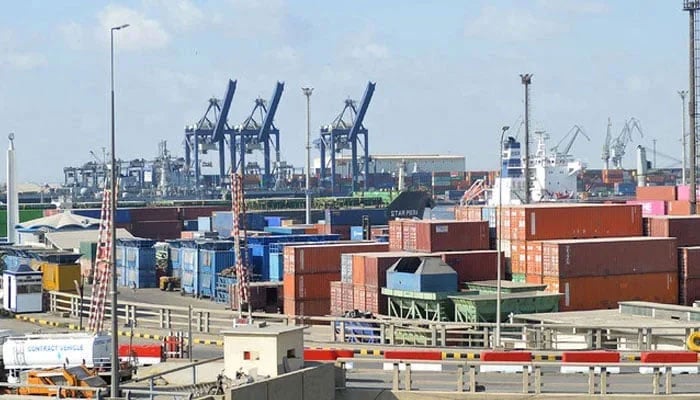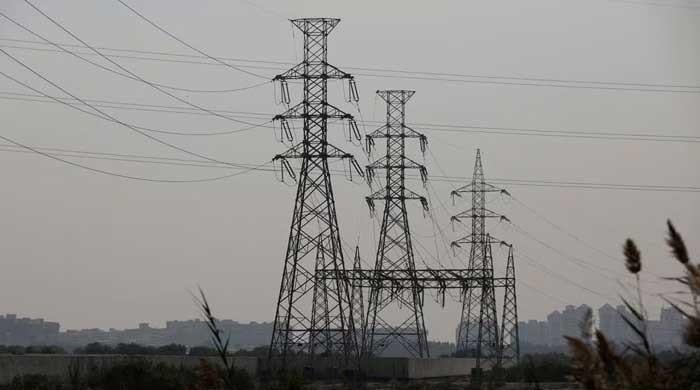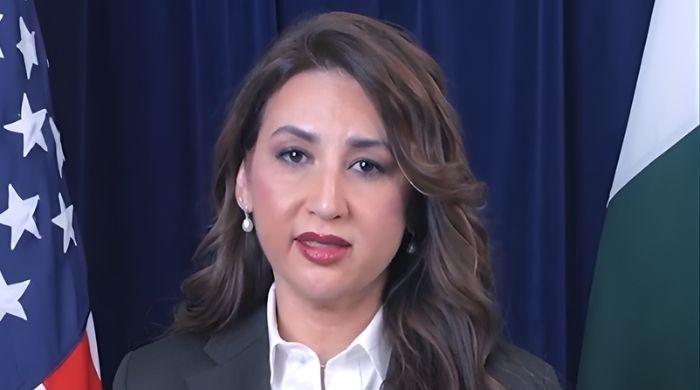KPT, PQA facing connectivity, transshipment issues
Global best practices ensure clearance within 48 to 72 hours, whereas, Pakistani ports take up to 14 days
February 10, 2025

- Docking of vessels with higher freight capacity inhibited at KPT.
- Task force suggests improvement in KPT's road connectivity.
- Proposes deepening main channel to accommodate larger vessels.
ISLAMABAD: Lack of robust road and rail infrastructure is a major bottleneck for Karachi Port Trust (KPT).
Defence ministry sources said that at KPT, the absence of a dedicated Cargo Express Way restricts freight movement to just six to seven hours daily, while outdated railway infrastructure further hampers cargo handling.
The port's main channel depth is 16 metres, however, the inability to maintain this depth inhibits the docking of vessels with higher freight handling capacity.
At Port Qasim Authority (PQA), the depth of the main channel is 15 metres which is further reduced due to silting, while excessive charges at the Qasim International Container Terminal (QICT) have forced importers to rely on costlier alternatives.
For instance, the average cost per Twenty Equivalent Unit (TEU) which is a normal twenty feet long container (8 feet wide and 8.5 feet high) at QICT is Rs14,000, as compared to Rs5,000 at KPT, making it less competitive.
Sources said that the Task Force on Maritime Revamping suggests the construction of an Elevated Expressway to enhance road connectivity of the KPT.
Fast-track approval for deepening the main channel to accommodate larger vessels is also planned.
Restoration of redundant rail links and regular dredging to maintain channel depth is also proposed by the Task Force.
A dedicated freight corridor between KPT and PQA to improve inter-port connectivity also remains a need of the hour.
The sources said that Pakistan’s transshipment potential also remains untapped, with KPT handling only 0.017 million TEUs annually, compared to 14 million at Jebel Ali, Dubai.
It is also disclosed that while global best practices ensure clearance within 48 to 72 hours, Pakistani ports take up to 14 days, forcing traders to seek more efficient options.
This delay leads to excessive freight charges for the businesses as they are charged $100 per day due to prolonged port clearance delays.
Outdated manual processing, slow clearance procedures and high freight charges have made Pakistani ports non-competitive.
The unimplemented KPT-SAPT (South Asia Pakistan Terminal) agreement, which guarantees 60% of terminal business through transshipment (the process of transferring cargo from one vessel to another before reaching the destination), further discourages investment.
Off-Dock Terminals (ODTs) which provide space for clearance/inspection of containers reducing congestion at ports face similar challenges, including weak regulatory oversight, lack of proper container inspection, and reliance on internationally leased ports.
These issues have led to significant revenue losses due to smuggling, misdeclaration, and under-invoicing.
The Task Force has urged the need to streamline customs and clearance processes to reduce delays; deploy high-end scanners and electronic seals for 100% container inspection; the integration of ODTs with the Pakistan Single Window (PSW) for transparency; and promotion of local ODTs to reduce dependence on expensive international ports.
It is said that global shipping giant Maersk has already shown interest in investing $2 billion in Pakistan's maritime sector, including the establishment of integrated logistics hubs, deep-water container terminals and International Maritime Organisation (IMO)-compliant ship recycling facilities.
A Pakistan Customs Gap study, due in March 2025, is expected to provide recommendations for process improvements.
Originally published in The News









